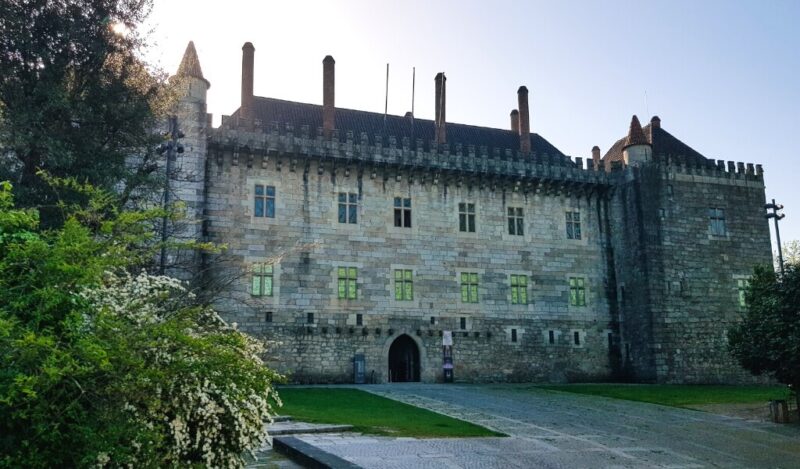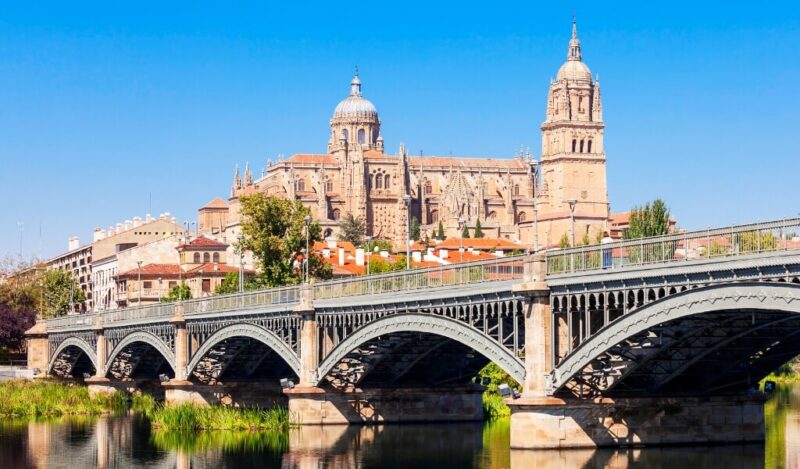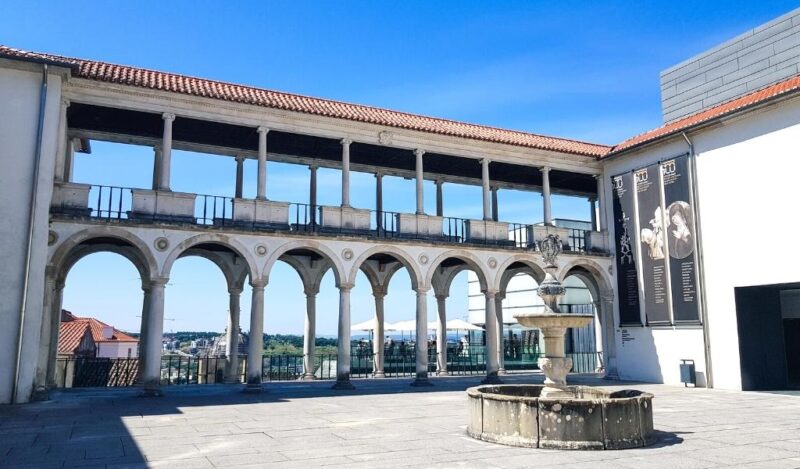Do you want to visit the World Heritage in Île-de-France (in English, Upper France)? Search no further, as I’ve rounded up a complete list of the World Heritage in Île-de-France. From Versailles to Fontainebleau, get ready to discover unique, beautiful, and jaw-dropping sites!
Île-de-France is an administrative region located in northern France and its capital is the city of Paris. In addition, it’s the most populous region in the country and the twelfth largest, encompassing the Essonne, Hauts-de-Seine, Paris, Seine-et-Marne, Seine-Saint-Denis, Val-de-Marne, Val-d’Oise, and Yvelines departments!
So, do you want to know more about the World Heritage In Île-de-France (2024)? Keep reading!
This post may contain affiliate links, meaning I earn a small commission if you make a purchase, at no additional cost to you. Please read my disclosure & privacy policy for more information.
No time to read now? Pin it for later!


- World Heritage in France
- World Heritage in Île-de-France
- 1. Palace and Park of Versailles (1979)
- 2. Palace and Park of Fontainebleau (1981)
- 3. Paris, Banks of the Seine (1991)
- 4. Routes of Santiago de Compostela in France (1998)
- 5. Provins – Town of Medieval Fairs (2001)
- 6. The Architectural Work of Le Corbusier, an Outstanding Contribution to the Modern Movement (2016)
- Map of the World Heritage in Île-de-France
- More Posts about France
- More Posts about World Heritage
- What Photography Gear Do I Use?
World Heritage in France
These are the 52 sites currently listed as World Heritage in France:
- Abbey Church of Saint-Savin sur Gartempe (Nouvelle-Aquitaine)
- Amiens Cathedral (Hauts-de-France)
- Ancient and Primeval Beech Forests of the Carpathians and Other Regions of Europe (Grand Est, Occitania, and Provence-Alpes-Côte d’Azur)
- Arles, Roman and Romanesque Monuments (Provence-Alpes-Côte d’Azur)
- Belfries of Belgium and France (Hauts-de-France)
- Bordeaux, Port of the Moon (Nouvelle-Aquitaine)
- Bourges Cathedral (Centre-Val de Loire)
- Canal du Midi (Occitania)
- Cathedral of Notre-Dame, Former Abbey of Saint-Rémi and Palace of Tau, Reims (Grand Est)
- Chaîne des Puys – Limagne fault tectonic arena (Auvergne-Rhône-Alps)
- Champagne Hillsides, Houses and Cellars (Grand Est)
- Chartres Cathedral (Centre-Val de Loire)
- Cistercian Abbey of Fontenay (Bourgogne-Franche-Comté)
- Cordouan Lighthouse (Nouvelle-Aquitaine)
- Decorated Cave of Pont d’Arc, known as Grotte Chauvet-Pont d’Arc, Ardèche (Auvergne-Rhône-Alps)
- Episcopal City of Albi (Occitania)
- Fortifications of Vauban (Brittany, Bourgogne-Franche-Comté, Grand Est, Hauts-de-France, Normandy, Nouvelle-Aquitaine, Occitania, and Provence-Alpes-Côte d’Azur)
- French Austral Lands and Seas (French Southern and Antarctic Lands)
- From the Great Saltworks of Salins-les-Bains to the Royal Saltworks of Arc-et-Senans, the Production of Open-pan Salt (Bourgogne-Franche-Comté)
- Funerary and Memory Sites of the First World War (Western Front) (Grand Est, Hauts-de-France, and Île-de-France)
- Gulf of Porto: Calanche of Piana, Gulf of Girolata, Scandola Reserve (Corsica)
- Historic Centre of Avignon: Papal Palace, Episcopal Ensemble and Avignon Bridge (Provence-Alpes-Côte d’Azur)
- Historic Fortified City of Carcassonne (Occitania)
- Historic Site of Lyon (Auvergne-Rhône-Alps)
- Jurisdiction of Saint-Emilion (Nouvelle-Aquitaine)
- Lagoons of New Caledonia: Reef Diversity and Associated Ecosystems (New Caledonia)
- Le Havre, the City Rebuilt by Auguste Perret (Normandy)
- Mont-Saint-Michel and its Bay (Normandy)
- Nice, Winter Resort Town of the Riviera (Provence-Alpes-Côte d’Azur)
- Nord-Pas de Calais Mining Basin (Hauts-de-France)
- Palace and Park of Fontainebleau (Île-de-France)
- Palace and Park of Versailles (Île-de-France)
- Paris, Banks of the Seine (Île-de-France)
- Pitons, cirques and remparts of Reunion Island (Réunion)
- Place Stanislas, Place de la Carrière and Place d’Alliance in Nancy (Grand Est)
- Pont du Gard (Roman Aqueduct) (Occitania)
- Prehistoric Pile Dwellings around the Alps (Auvergne-Rhône-Alps and Bourgogne-Franche-Comté)
- Prehistoric Sites and Decorated Caves of the Vézère Valley (Nouvelle-Aquitaine)
- Provins, Town of Medieval Fairs (Île-de-France)
- Pyrénées – Mont Perdu (Occitania)
- Roman Theatre and its Surroundings and the “Triumphal Arch” of Orange (Provence-Alpes-Côte d’Azur Region)
- Routes of Santiago de Compostela in France (Auvergne-Rhône-Alps, Bourgogne-Franche-Comté, Centre-Val de Loire, Grand Est, Hauts-de-France, Île-de-France, Normandy, Nouvelle-Aquitaine, Occitania, and Provence-Alpes-Côte d’Azur)
- Strasbourg, Grande-Île and Neustadt (Grand Est)
- Taputapuātea (French Polynesia)
- The Architectural Work of Le Corbusier, an Outstanding Contribution to the Modern Movement (Auvergne-Rhône-Alps, Bourgogne-Franche-Comté, Grand Est, Île-de-France, Nouvelle-Aquitaine, Pays de la Loire, and Provence-Alpes-Côte d’Azur)
- The Causses and the Cévennes, Mediterranean agro-pastoral Cultural Landscape (Auvergne-Rhône-Alps, Bourgogne-Franche-Comté, Nouvelle-Aquitaine, and Occitania)
- The Climats, terroirs of Burgundy (Bourgogne-Franche-Comté)
- The Great Spa Towns of Europe (Auvergne-Rhône-Alps)
- The Loire Valley between Sully-sur-Loire and Chalonnes (Centre-Val de Loire and Pays de la Loire)
- The Maison Carrée of Nîmes (Occitania)
- Vézelay, Church and Hill (Bourgogne-Franche-Comté)
- Volcanoes and Forests of Mount Pelée and the Pitons of Northern Martinique (Martinique)
As you can see, eight of these forty-nine sites listed as World Heritage in France are part of more than one region or territory. The remaining forty-four are distributed as follows:
- 6 in Occitania
- 5 in Nouvelle-Aquitaine
- 4 in Auvergne-Rhône-Alps
- 4 in Bourgogne-Franche-Comté
- 4 in Île-de-France
- 4 in Provence-Alpes-Côte d’Azur
- 4 in Grand Est
- 3 in Hauts-de-France
- 2 in Centre-Val de Loire
- 2 in Normandy
- 1 in Corsica
- 1 in French Polynesia
- 1 in Martinique
- 1 in New Caledonia
- 1 in Réunion
- 1 in the French Southern and Antarctic Lands
World Heritage in Île-de-France
1. Palace and Park of Versailles (1979)
The Palace and Park of Versailles were inscribed on the World Heritage List in 1979, the first year in which the country had nominations approved. Of the six sites listed as World Heritage in Île-de-France, this is the only one situated in the Versailles commune, and in the Yvelines department.

The best things to do in Versailles include:
- Chapelle Notre-Dame-des-Armées de Versailles
- Château de Versailles
- Domaine de Madame Elisabeth
- Église Notre-Dame de Versailles
- Église Saint-Symphorien de Versailles
- Galerie des Carrosses
- Galerie des Sculptures et des Moulages
- Grand Trianon
- Jardins de Versailles
- Hameau de la Reine
- Musée Lambinet
- Palais des Congrès de Versailles
- Parc de Versailles
- Petit Trianon
- Salle du Jeu de Paume
Read my complete guide to the Palace of Versailles, one of the sites listed as World Heritage in Île-de-France!
2. Palace and Park of Fontainebleau (1981)
The Palace and Park of Fontainebleau were inscribed on the World Heritage List in 1981, the second year in which the country had nominations approved. Of the six sites listed as World Heritage in Île-de-France, this is the only one situated in the Fontainebleau commune, in the Seine-et-Marne department.

The best things to do in Fontainebleau include:
- Chapelle du Carmel de Fontainebleau
- Château de Fontainebleau
- Couvent des Carmes d’Avon
- Église Saint-Louis de Fontainebleau
- Jardins de Fontainebleau
- Parc de Fontainebleau
- Place de la République
- Théâtre Municipal de Fontainebleau
- Tour Denecourt
- Tour de Samois
Read my complete guide to the Palace of Fontainebleau, one of the sites listed as World Heritage in Île-de-France!
3. Paris, Banks of the Seine (1991)
Paris, Banks of the Seine was inscribed on the World Heritage List in 1991, the seventh year in which the country had nominations approved. Of the six sites listed as World Heritage in Île-de-France, this is the only one situated in the Paris commune and department.

The best things to do in Paris include:
- Arc de Triomphe
- Basilique du Sacré-Cœur
- Catacombes de Paris
- Cathédrale Notre-Dame de Paris
- Centre Pompidou
- Champs des Mars
- Conciergerie
- Grande Galerie de l’Évolution
- Jardin des Plantes
- Jardin des Tuileries
- Jardin du Luxembourg
- Musée de l’Orangerie
- Musée d’Orsay
- Musée du Louvre
- Musée Grévin
- Palais Garnier (Opéra Garnier)
- Panthéon de Paris
- Parc des Buttes-Chaumont
- Pont Alexandre III
- Sainte-Chapelle
- Tour Eiffel
4. Routes of Santiago de Compostela in France (1998)
The Routes of Santiago de Compostela in France were inscribed on the World Heritage List in 1998, the twelfth year in which the country had nominations approved. Of the six sites listed as World Heritage in Île-de-France, this is the only one situated in ten different regions:
- Auvergne-Rhône-Alps
- Bourgogne-Franche-Comté
- Centre-Val de Loire
- Grand Est
- Hauts-de-France
- Île-de-France
- Normandy
- Nouvelle-Aquitaine
- Occitania
- Provence-Alpes-Côte d’Azur

The only example of this multi-regional inscription that integrates Île-de-France is the Tour Saint-Jacques, in the Paris department!
5. Provins – Town of Medieval Fairs (2001)
Provins – Town of Medieval Fairs was inscribed on the World Heritage List in 2001, the fifteenth year in which the country had nominations approved. Of the six sites listed as World Heritage in Île-de-France, this is the only one situated in the Provins commune, in the Seine-et-Marne department.

The best things to do in Provins include:
- Collégiale Saint-Quiriace
- Église Sainte-Croix de Provins
- Église Saint-Ayoul de Provins
- Grange aux Dîmes
- Jardin Garnier
- Maison du Bourreau
- Musée de Provins et du Provinois
- Place du Châtel
- Porte du Jouy
- Porte Saint-Jean
- Remparts de Provins
- Roseraie de Provins
- Souterrains de Provins
- Tour César
- Tour Notre-Dame-du-Val
Read my complete guide to Provins, one of the sites listed as World Heritage in Île-de-France!
6. The Architectural Work of Le Corbusier, an Outstanding Contribution to the Modern Movement (2016)
The Architectural Work of Le Corbusier, an Outstanding Contribution to the Modern Movement was inscribed on the World Heritage List in 2016, the twenty-second year in which the country had nominations approved. Of the six sites listed as World Heritage in Île-de-France, this is the only one situated in six different regions:
- Auvergne-Rhône-Alps
- Bourgogne-Franche-Comté
- Grand Est
- Île-de-France
- Nouvelle-Aquitaine
- Pays de la Loire
- Provence-Alpes-Côte d’Azur
There are four examples of this multi-regional inscription that integrates Île-de-France: the Immeuble Molitor, in the Hauts-de-Seine department; the Maison La Roche, in the Paris department; the Villa Jeanneret, also in the Paris department; and the Villa Savoye, in the Yvelines department.
Map of the World Heritage in Île-de-France
Share this blog post on your social media!
More Posts about France
Gustave Moreau Museum: Best Tips For Visiting In 2024
Museum Of Romantic Life: Best Tips For Visiting In 2024
Marmottan Monet Museum: Best Tips For Visiting In 2024
More Posts about World Heritage
Palace Of The Dukes Of Braganza: Best Tips For Visiting In 2024
World Heritage In Castile And León (2024)
Machado De Castro National Museum: Best Tips For Visiting In 2024
What Photography Gear Do I Use?
- Camera Body: Fujifilm X-T4 Mirrorless
- Camera Lens: Fujinon XF 18-55 mm F2.8-4 R LM OIS
- Tripod: Manfrotto Compact Action
- Small Tripod: Manfrotto PIXI Mini
- Smartphone Adaptor: Manfrotto PIXI Clamp
- Memory Card: SanDisk 128GB Extreme PRO SDXC
This blog post uses stock photographs (Getty Images)






